No Results Found
The page you requested could not be found. Try refining your search, or use the navigation above to locate the post.
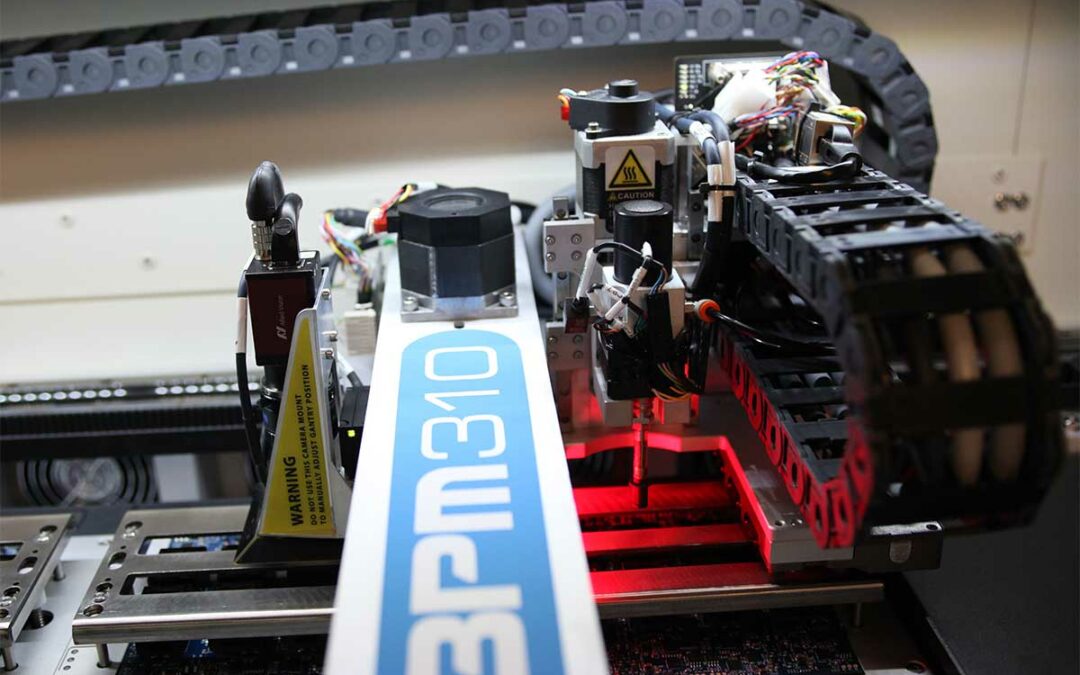
 BPM provides device programmers and accessories to upload custom programming to semiconductor devices. Founded in 1985, BPM Microsystems serves more than 2,000 companies in over 49 countries, including programming centers, original equipment manufacturers (OEM), contract and semiconductor manufacturers. BPM device programmers offer high-performance device handling, advanced serialization, and quality control, meeting the highest programming and cybersecurity standards for automotive, aerospace, medical, industrial, and mobile device applications. BPM’s intelligently designed systems deliver the lowest programming cost per device.
BPM provides device programmers and accessories to upload custom programming to semiconductor devices. Founded in 1985, BPM Microsystems serves more than 2,000 companies in over 49 countries, including programming centers, original equipment manufacturers (OEM), contract and semiconductor manufacturers. BPM device programmers offer high-performance device handling, advanced serialization, and quality control, meeting the highest programming and cybersecurity standards for automotive, aerospace, medical, industrial, and mobile device applications. BPM’s intelligently designed systems deliver the lowest programming cost per device.
Back in 1985 in a dorm room at Rice University, Bill White founded BP Microsystems (later BPM Microsystems). He couldn’t find a decent chip programmer for a class project he was working on, so he made his own. He started to sell the EP-1, an E/EPROM programmer, locally and then by mail order; the rest is history. BPM still builds all of its systems in its ISO:9001 plant in Houston, Texas.
BPM device programmers serve the world with billions and billions of accurately programmed devices in thousands of products (everything from thermometers to infotainment systems) by bringing compelling programming systems to market.
BPM designs and manufactures universal programming systems and supports them with algorithms and socket adapters (software and hardware) to program specific devices. BPM’s catalog of supported devices is in excess of 70,000, including both legacy and cutting-edge technologies. Newer and faster versions are continually added on an almost daily basis. BPM serves electronics manufacturers around the world including OEM, ODM, EMS, and programming centers. Industries that utilize BPM programming solutions include Automotive, Healthcare, Aerospace/Defense, Industrial, IoT/Industry 4.0, and Cybersecurity.
BPM has “generations” of products with specific site technology. The “site” is the magic of BPM programmers, and sockets/algos make them the most “universal” of device programmers. Universal, as opposed to single-use, allows the systems to be configured to support thousands of devices on hundreds of different socket adapters. BPM pioneered socket adapter technology with active circuitry that delivers clean signal integrity and high yield.
The latest generation of BPM sites is 10th Gen. 10th Generation site technology offers the broadest support in the industry at unsurpassed programming speeds.
The newest Automated Programmer, the BPM310, comes with up to six 10th Gen sites providing full universal support for UFS, eMMC HS400, MCU, NAND, and Serial Flash, at incredible speeds with up to 48 devices programmed concurrently. It is the most capable programmer in a small footprint. For UFS 2.1, each site can program eight devices at a time, at up to 440 MB/second read and 201 MB/second write (industry best).
Ranges of Device Programmers
Programmable devices are becoming more ubiquitous. More products than ever before require some kind of customization to add functionality. BPM makes device programmers that focus on quality and reliability. Some products, such as satellites, require just a handful of each device programmed per month (or year); the cost for just one of those chips (such as an anti-fuse FPGA) can cost upwards of $100,000! When the cost of failure is that high, aerospace companies turn to BPM. Other companies need millions of programmed devices. BPM makes Automated systems that are fast, easy to set up/change over, and reliable, with available automotive-level support verification (such as coplanarity test to confirm pin and ball grid array integrity).
BPM continues to support many of its legacy programmers (some for more than 20 years) and adds additional supported devices on a weekly basis. When new devices are needed, BPM quotes hardware and software support. Customers with current Hardware Support contracts can make complementary 24/7 service calls (free for one year with a new purchase). If machines experience issues, field service technicians with decades of experience and/or factory-trained service technicians are available for local support worldwide, usually within 48 hours.
 BPM serves both legacy and emerging markets. For instance, UFS and eMMC devices with massive memories (measured in Gigabytes) are becoming more common in infotainment, navigation, autonomous vehicles, military applications, etc. The universal nature of BPM programmers means one system can program multiple different devices (although not simultaneously). Some competitive systems require two different site technologies in order to cover their full device list.
BPM serves both legacy and emerging markets. For instance, UFS and eMMC devices with massive memories (measured in Gigabytes) are becoming more common in infotainment, navigation, autonomous vehicles, military applications, etc. The universal nature of BPM programmers means one system can program multiple different devices (although not simultaneously). Some competitive systems require two different site technologies in order to cover their full device list.
The legacy market is alive and well, especially in aerospace/defense. Many contractors and military branches, such as the US Navy, rely on BPM legacy (7th Generation) programmers. They’ve spent millions on qualifying solutions, and continue to purchase this proven 17-year-old technology from BPM.
Devices are trending to smaller, denser (more data) packages. This makes off-line programming (as opposed to in-circuit or at-test programming) the scalable choice. To program more chips, you add site and socket capacity, additional shifts, or additional systems (or a combination). Smaller packages (less than 3mm x 3mm) are particularly challenging. BPM systems have capabilities that are only available on larger competitive systems. All BPM automated programming systems come with WhisperTeach™ Auto-Z Teach (for fast, easy set-ups/changeovers) and CyberOptic cameras for component auto measure (fast set-ups) and on-the-fly alignment for maximum first pass yield and throughput.
Supply chain shortages, which first started in mid-2020 as a consequence of the COVID-19 pandemic, continue to plague consumer, automotive, and electronics manufacturers. Semi-houses are building new factories and expanding existing facilities to meet demand but will take years before they can catch up. Programmable devices require value-added programming to make them fully functional; it’s not just a matter of receiving an order of chips– those devices need programming and installation on circuit boards. Delays in even one area can ripple through, causing additional delays downstream.
Many companies are looking at in-house device programming as a means of gaining more control over their supply chain. For companies that have added programming in-house, they are also finding greater control of their intellectual property. Small changes in firmware versioning are now possible for rapid prototyping and implementation. Above all, device programming that was previously a cost center quickly becomes a profit center, as a return on initial investment can be realized in a few months, not years.
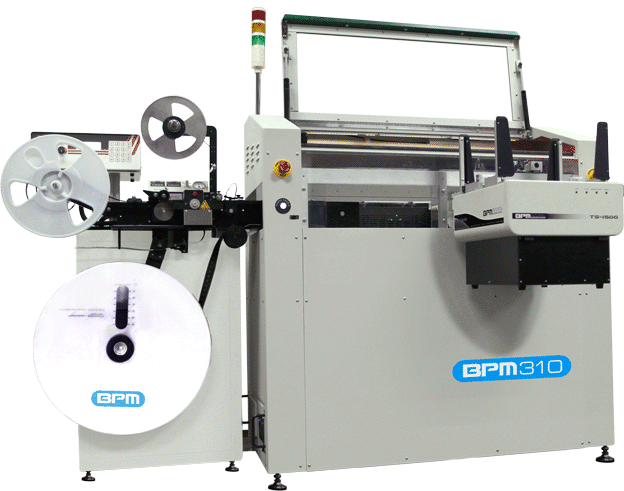 In late 2021, BPM announced the release of its 10th Generation programming technology platform and the BPM310 Automated Programming System. The 10th Generation offers the industry’s fastest programming times for UFS, eMMC, Flash, and MCUs with twice as many sockets per site as its predecessor. The BPM310 offers a capacity of up to 48 sockets, automotive-level quality, and reliability in a small footprint. 10th Gen delivers the fastest UFS programming performance in the industry achieving up to 440MB/second Read and 201MB/second Write. First-part time is accelerated because UFS programming can commence without pausing for data to download.
In late 2021, BPM announced the release of its 10th Generation programming technology platform and the BPM310 Automated Programming System. The 10th Generation offers the industry’s fastest programming times for UFS, eMMC, Flash, and MCUs with twice as many sockets per site as its predecessor. The BPM310 offers a capacity of up to 48 sockets, automotive-level quality, and reliability in a small footprint. 10th Gen delivers the fastest UFS programming performance in the industry achieving up to 440MB/second Read and 201MB/second Write. First-part time is accelerated because UFS programming can commence without pausing for data to download.
“Our engineering team has done an amazing job creating the most powerful universal programmer in the industry. Unlike competitive products, our system offers true universal support including CSP, Flash, MCUs, eMMC, and UFS with up to 8 sockets per site to deliver unbeatable system value,” says William White, founder, and CEO of BPM Microsystems. “The BPM310 is now our flagship product with the greatest capacity, flexibility, features, reliability, and smallest footprint in our product line.”
The BPM310 leverages much of the socket adapter and algorithm development currently available on its 9th Generation systems. And like all 9th Gen automated device programmers, the BPM310 continues to offer ease of operation and fast setup with award-winning BPWin process control software and patented WhisperTeach™. WhisperTeach™ automatically teaches the critical Z-height of each pick/place location with 15-micron accuracy. Accurate automated teaching is vital for small packages due to fundamental human limitations. Plus WhisperTeach™ saves an average of 83% of the time required for the job setup compared to traditional methods while increasing quality and yield.
Supply chain issues, especially for programmable devices, will continue to plague manufacturers for perhaps the next two years. In an effort to reduce costs and shorten lead times, BPM sees continued growth in offline programming. Security and IP protection will continue to drive companies to take more control of their most valuable assets: their intellectual property. By physically securing IP, competitors are less likely to reverse engineer (or flat-out steal) their designs. Other advantages of programming in-house are improved quality, reliability, and more flexibility by keeping programmed devices to just-in-time inventory levels (not possible with outsourcing).
Device Search | Bring Programming In-House | How to Program In-House
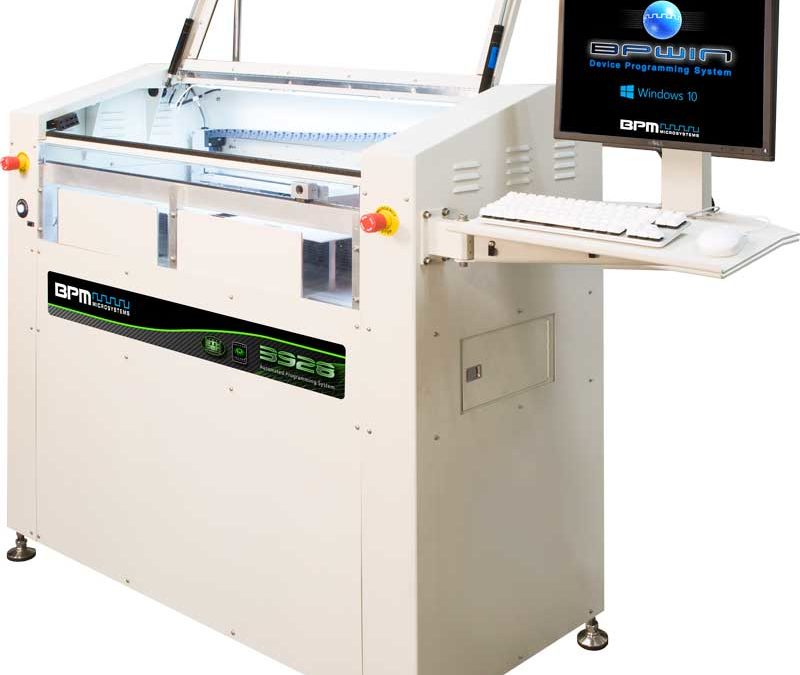
BPM Microsystems is pleased to announce the sale of an Automated Programming System to an existing Tier 1 Automotive OEM customer. “This is fantastic news and an especially strong sale considering the economic backdrop right now,” says William White, founder, and CEO of BPM Microsystems. “We love repeat orders– even when the first machine was so good it took over 15 years to replace.”
Because of non-disclosure, BPM cannot divulge too much but can say the purchase was made by an Original Equipment Manufacturer that provides high-reliability automotive systems. They have been using a BPM 4X Automated System for over 15 years. The company is augmenting it with BPM’s 3928 with four 9th Generation Sites that can program up to 16 devices concurrently. The smaller footprint 3928 has a maximum throughput of 1,432 Devices Per Hour (nearly 30% greater mechanical DPH and more than double the maximum socket capacity of their 6th Generation system). Some of their legacy device programming will continue to be produced on their BPM 4610; a hallmark of the typical return on investment achievable on the BPM automated programming systems.
The 3928 comes standard with WhisperTeach™ automated Z-Height teaching for fast, reliable set-ups, and the CyberOptics LNC120 camera for component auto measure (fast set-ups) and on-the-fly alignment for maximum first pass yield and throughput. The 3928 is outfitted with the TM-50 Tape Loading system and the latest 3000-Series Fiber Laser, capable of producing machine-readable QR codes and barcodes for ultimate component traceability. Laser systems generate dust (a bad thing in an SMT environment); the BPM laser system is equipped with a two-stage dust collection system that is second-to-none in offline programmers.
“Customers have choices when they buy systems. Their vote of confidence says a lot about the productivity and quality they achieve and our ability to keep them happy,” says Mr. White.
BPM manufactures all its systems in their ISO 9001:2015 certified plant located in Houston, Texas, and its products carry the CE Mark. To learn how BPM makes device programming easy, fast and affordable, go to www.bpmmicro.com/device-programmers.

We’ve expanded from popular sockets to just about all the sockets BPM has available (and adding weekly). You can use the search bar to sort through the list. If you click on the SKU, it will take you to the product page, or you can order directly on the main page by clicking the “Add” button. You can purchase the socket with a credit card, or place an order with a purchase order. Because of distributor agreements, we are only shipping web orders in the US, Canada, and Mexico. If you are in the Houston area, there is also an option to pick up your order.
Buy SocketsYou can also order Manual Programmers and APS Spare Parts kits.
To look up which device is supported by BPM Sockets, start with Device Search. Try shortening your query if you don’t get any results.
When you select a socket from the list of available solutions, click the link for “Request for Quote” to view socket specs, pricing, availability, etc. You can purchase the socket with a credit card, or place an order with a purchase order.
If you still don’t get anything (or you get a “Page not found” error), please submit a device request via BPM Connect.
Device Search | Device Request
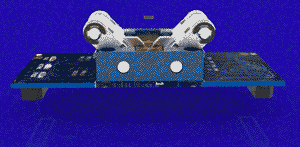 More Socket Content
More Socket Content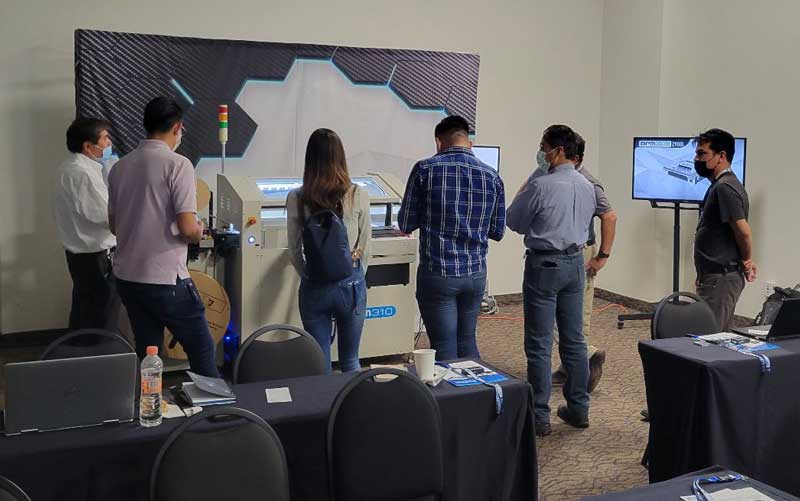
General Overview
• Alignment camera, New Laser system, New teaching process using WisperTeach, Vacuum system, Other new features
• Common troubleshooting
• Best practices
— Tools recommended for sockets maintenance
— How to perform a correct programming site maintenance
— Teaching new components
— Considerations for eMMC and high-density memories
— Considerations for Cyber-Security requirements
Thanks to all the technicians, managers, and directors who took time out of their busy schedules to spend a few hours learning more about offline device programming. Also, special thanks to Jim Villalvazo, Director, Fernando Islas, Regional Sales Manager, and Sofia Soto, Marketing with Interlatin. Representing BPM were Colin Harper, Director of Sales and Product Development, Penny Santhanam, Director of Customer Care, and Jose Romo, Field Services Engineer.
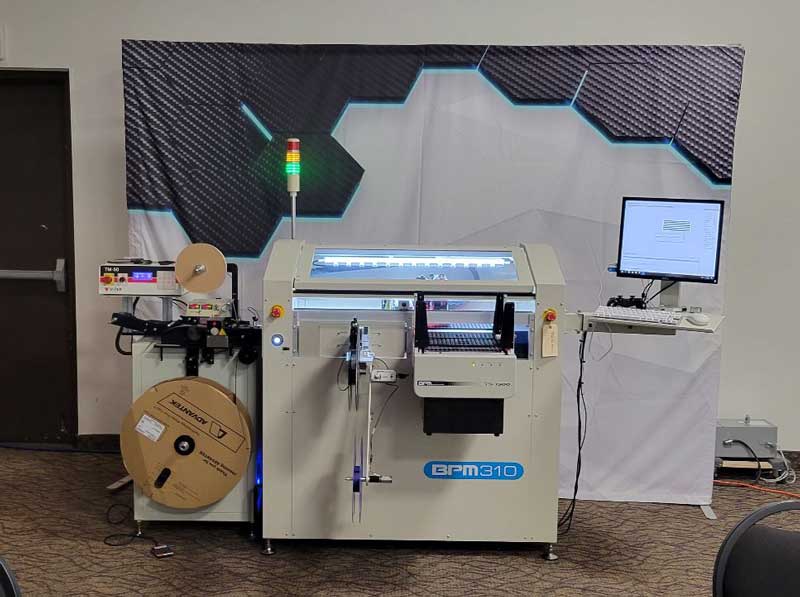

2022 marks the 35th anniversary of the invention of NAND flash memory. NOR Flash memory was invented by Dr. Fujio Masuoka while working for Toshiba in 1984. NOR-based flash has long erase and write times but has a full address/data (memory) interface that allows random access to any location. This makes it suitable for the storage of program code that needs to be infrequently updated, such as a computer’s BIOS or the firmware of set-top boxes. Its endurance is 10,000 to 1,000,000 erase cycles. NOR-based flash was the basis of early flash-based removable media; Compact Flash was originally based on it, though later cards moved to the cheaper NAND flash.
NAND flash was born out of a joint venture with Samsung and Toshiba and followed shortly thereafter. It has faster erase and write times, higher density, lower cost per bit than NOR flash, and ten times the endurance. However, it is most suitable for mass-storage devices such as PC cards and various memory cards because of its sequential write and is less useful for computer memory.
BPM has been around slightly longer than NAND Flash and has developed solutions for some of the particular challenges of programming flash devices. See the Flash white papers below.
SAN JOSE, Calif., February 10, 2022 – What do the MP3 players of the 1990s and today’s smartphones have in common? Neither would exist were it not for NAND flash memory, an innovation whose influence has reverberated throughout the decades. KIOXIA America, Inc. today announced that it has reached a new milestone – 2022 marks the 35th anniversary of the company’s invention of NAND flash memory.
The page you requested could not be found. Try refining your search, or use the navigation above to locate the post.
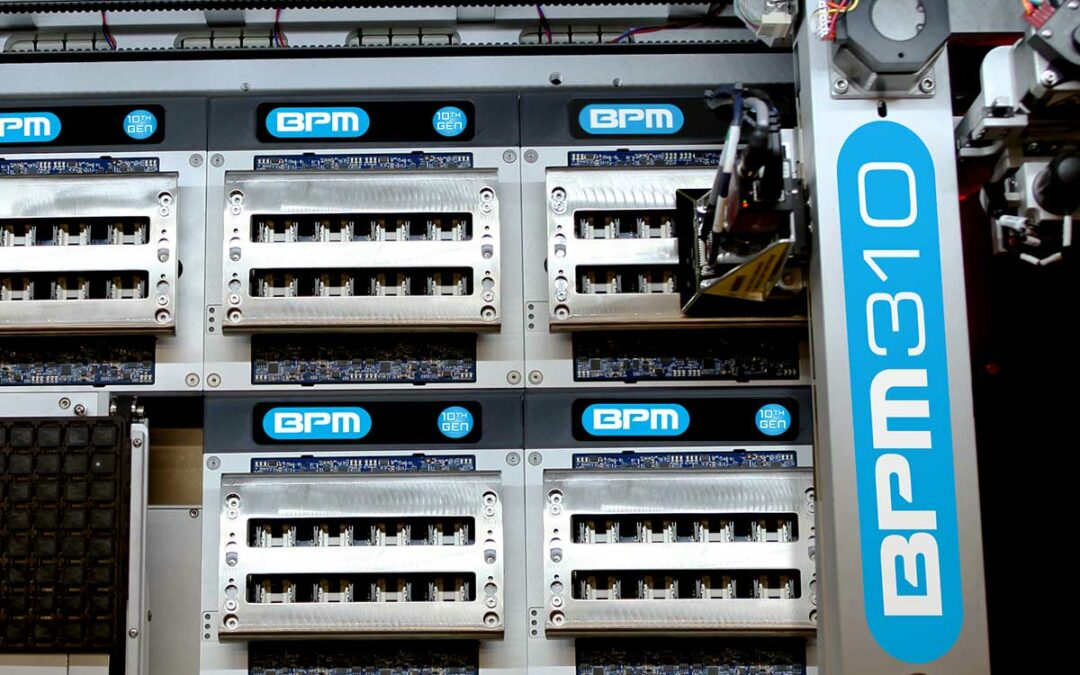
With routine maintenance and yearly calibration, BPM systems are designed for maximum uptime. Many factories worldwide run their Automated Programming Systems 6 days a week/3 shifts a day. For purposes of allocation, BPM recommends using an 85% utilization rate (but you may find it above 90% in actual use). BPM’s systems are easy to set up, especially compared to other comparable systems, making their utilization rate the best in class.
BPM ensures accuracy and repeatability for device programming In three main ways: Auto-teach, Vision Alignment, and Job Automation. All programming systems are highly repeatable– once they are set up, they will reliably repeat their program (even if it isn’t perfect). The trick is to start with a perfect setup, resulting in repeatable, reliable, and accurate yield.

A: Teach too high may cause misalignment. B: Teach too low may cause micro-fractures that oxidize over time. The device may pass the initial test only to fail in the field
WhisperTeach™ is BPM’s patented process to “auto-teach” the critical Z-height of input-output locations and sockets. You see, it’s easy, with a downward camera, to center the X/Y coordinates in the input/output and socket locations (and if you are off slightly, BPM’s on-the-fly vision centering auto corrects and auto centers). But there is no camera to precisely place and pick up the Z (up and down). Some locations are more difficult than others because of where in the machine they are. But even in the “easy” locations, a human operator can only see to about 45 microns (slightly smaller than the width of a human hair). WhisperTeach is a major factor in BPM’s systems ease and speeds up set-up without sacrificing quality– it’s more accurate (within 15 microns) than a human operator, even a highly trained technician.
For on-the-fly vision alignment, BPM systems utilize a CyberOptics LNC-120 camera which precisely spins the device between the input/output location and the socket without requiring the system to slow down. This boosts DPH (Devices per Hour) without sacrificing quality. BPM’s systems can handle the smallest chip-scale packages in the industry (as small as 1mm x 0.5mm).
Finally, Job Automation allows multiple workflows to be stored and retrieved quickly. BPWin, BPM’s Process Software, calls this application JobMaster. It allows you to prepare programming jobs to meet precise specifications, and then save the jobs for future use for repeatable quality.
BPM’s programming site technology has its origins in test equipment. Everything, from the pin drivers to the gold-plated contacts on sites and sockets, is designed to deliver the cleanest waveforms. If you want to know more, read the Signal Integrity article here. For the short version, signal integrity delivers maximum quality and device life expectancy (you don’t want “device amnesia“).
Clean waveforms give you programming results that you can count on and the highest first-pass yields.